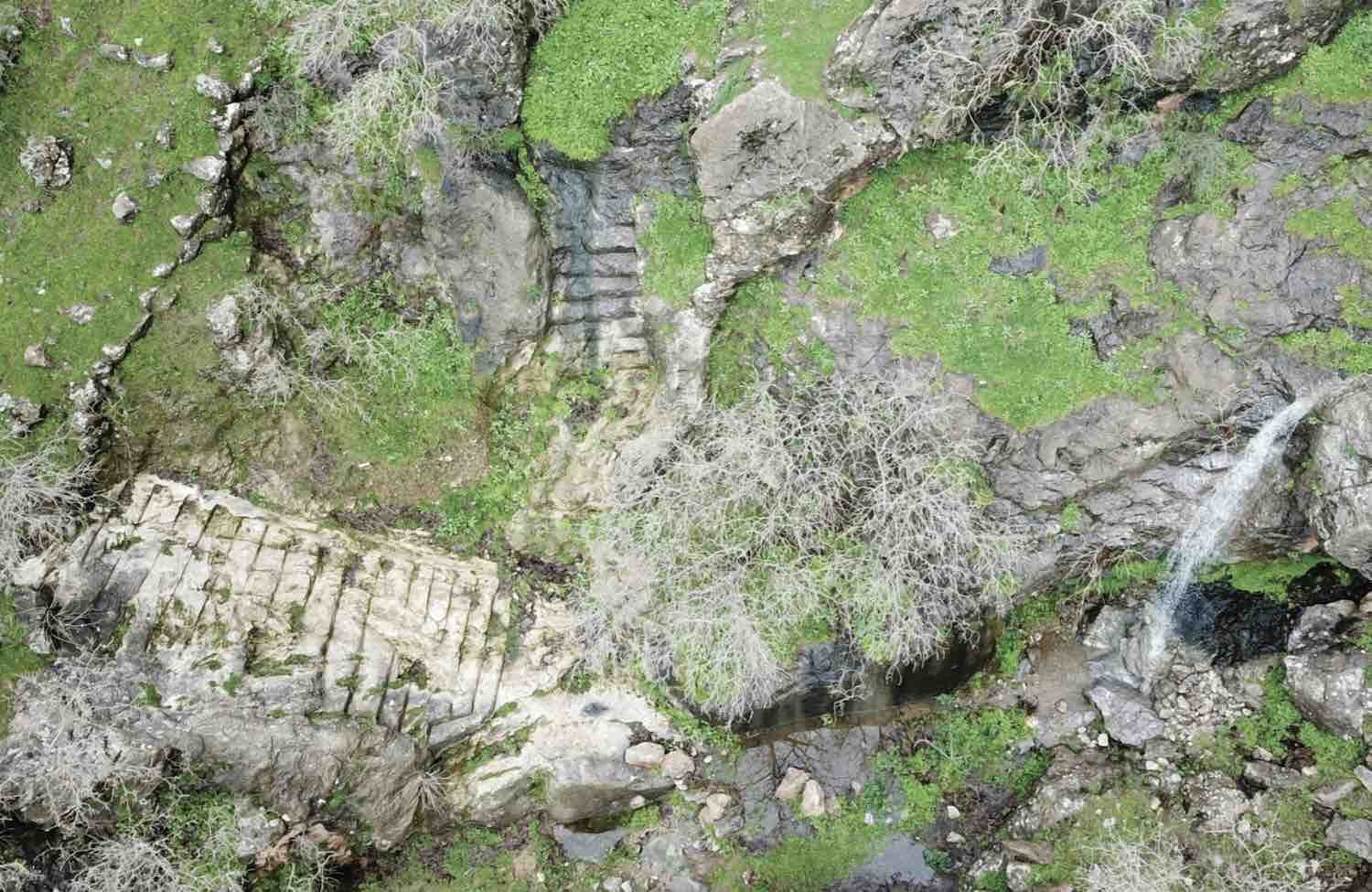Archaeologists report the discovery of a cult site within an ancient fortification in the Zagros Mountains that may have once been a sanctuary devoted to a Persian water goddess.
Discoveries at Rabana-Merquly, an ancient mountain settlement in modern Iraqi Kurdistan reveal that the location had likely served as both an ancient worship site dedicated to the goddess Anahita, but also as a fortress for its ancient builders during the Parthian Empire.
Along with the site’s military significance, the location’s ritual use is evidenced by architectural remains alongside a natural waterfall at the site, where the remnants of what may have been a fire altar suggest it may have been used as a place of worship.
More than 2,000 years ago, the Parthian Empire represented the predominant political and cultural power in portions of Iran and Mesopotamia. Also known as the Arsacid Empire, a name derived from its founder, Arsaces I, the Rabana-Merquly fortress served as a central hub for the empire from its location in the Zagros Mountains on the southwestern edge of Mount Piramagrun.
Rabana-Merquly consists of the main fortification, which spans nearly 2.5 miles (four kilometers), along with a pair of additional small settlements. Over more than a decade, excavations conducted by an international team of archaeologists explored the remains of the site, which revealed a stone relief depicting an unknown ruler who is believed to have been a Parthian king who likely had been associated with the founding of Rabana-Merquly.
In recent years, excavations at the site have been led by Michael Brown, Ph.D., with the Institute of Prehistory, Protohistory, and Ancient Near Eastern Archaeology at Heidelberg University.
The site’s religious component is believed to be associated with Anahita, the Persian representation of an early Iranian water goddess linked to fertility and healing, first recognized in Avesta manuscripts of the Zoroastrian religion as the source of water on Earth. Though personified as a beautiful woman, Anahita often was believed to have taken on the form of waterfalls and flowing streams.
Structural elements that include descending stairways that complement the natural landscape are suggestive of the location’s use as a shrine, which would have carried ancient visitors to the base of a seasonal waterfall that flows through the site.
“The proximity to the waterfall is significant,” Dr. Brown says, “because the association of fire and water elements played an important role in pre-Islamic Persian religion.” This is further evidenced by the presence of an altar-like sculpture nearby, where offerings may have been burned.
The site’s association with ritual practices was already established in 2022. At that time, archaeologists recovered a pair of burial vessels that date to sometime between the second and first century BC, which point to the existence of a shrine coinciding with the period during which the surrounding fortification was likely built.
Brown believes it is likely that the shrine preceded the site’s military significance, and even may have existed long before the worship of Anahita during the Parthian era as a site of ritual significance dating back to much earlier times.
Brown also concedes that there are currently no similar archaeological discoveries from nearby that can help to conclusively determine whether the site was associated with the water goddess Anahita.
Additionally, ritual sites such as the one unearthed at Rabana-Merquly often had a dual purpose, in that they also honored dynastic cults, which could explain the imagery believed to represent an unknown king at the site, which worshipers undoubtedly would have observed as they made their way to the sanctuary area.
Nonetheless, Brown says “the Rabana sanctuary still provides us with a fascinating glimpse into the regional sacral and geopolitical interconnections during the Parthian era.”
Brown and his team’s findings were published in a new paper, “A Possible Parthian-Era Anahita Sanctuary at Rabana in The Kurdistan Region Of Iraq,” which appeared in Iraq and were published by Cambridge University Press earlier this year.
Micah Hanks is the Editor-in-Chief and Co-Founder of The Debrief. He can be reached by email at micah@thedebrief.org. Follow his work at micahhanks.com and on X: @MicahHanks.

